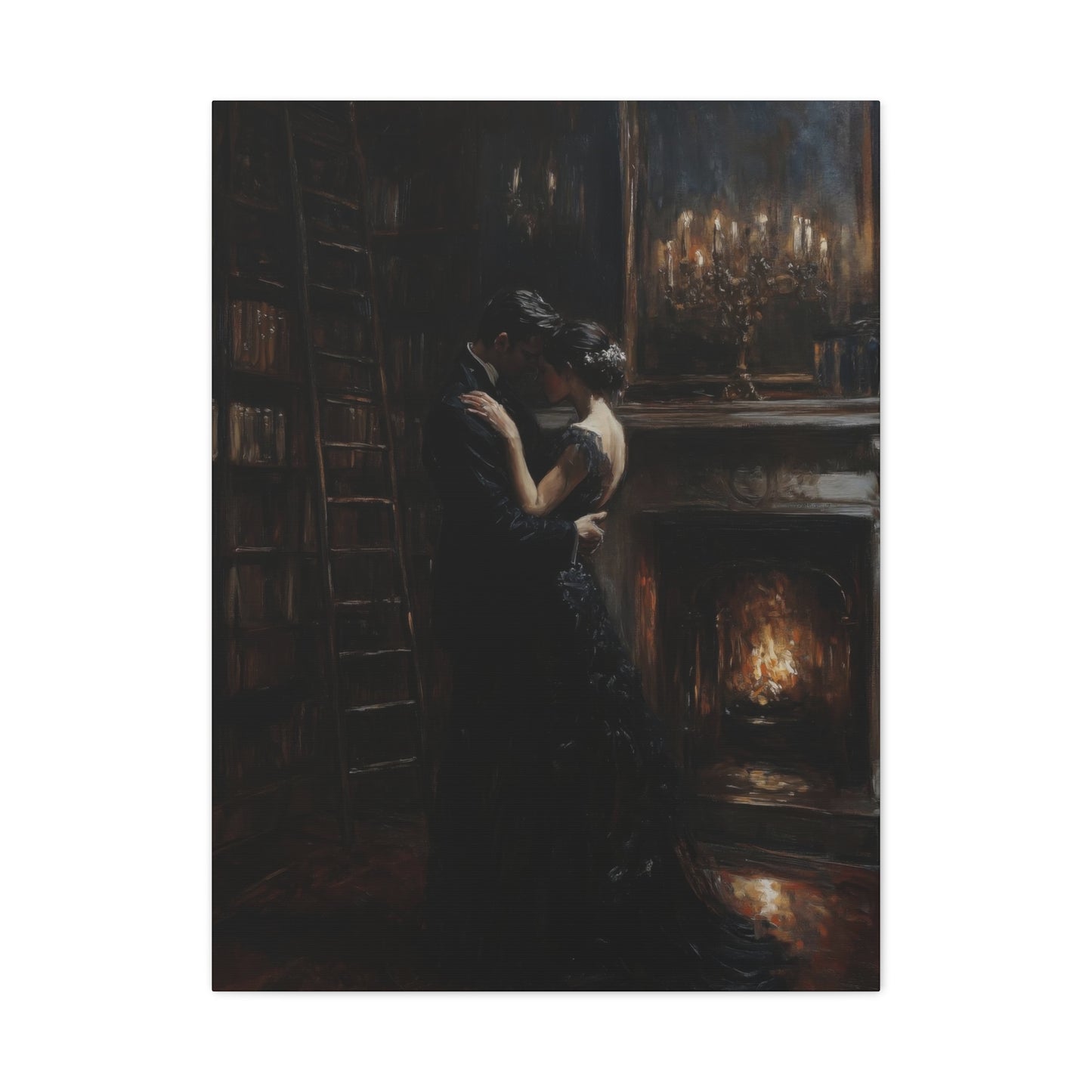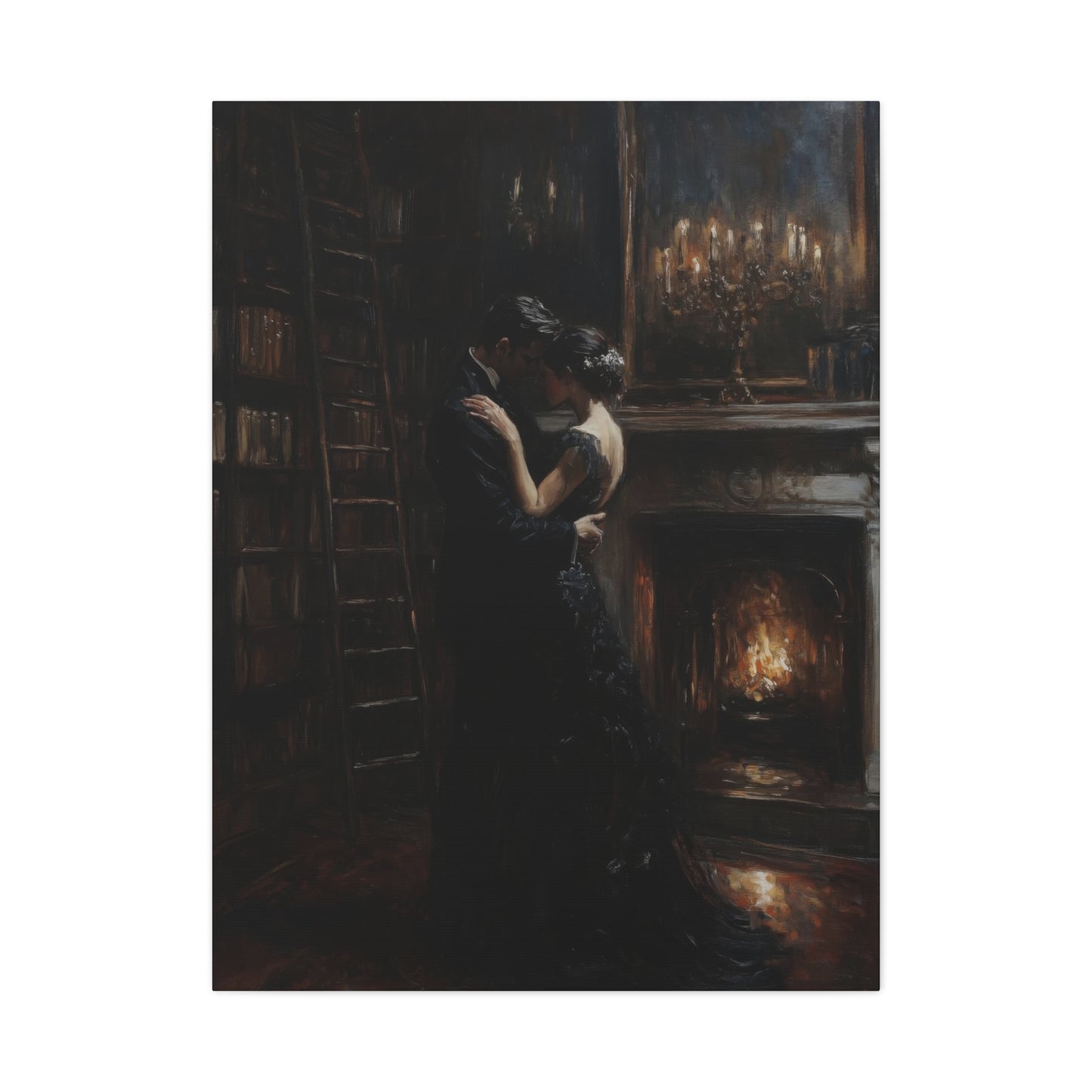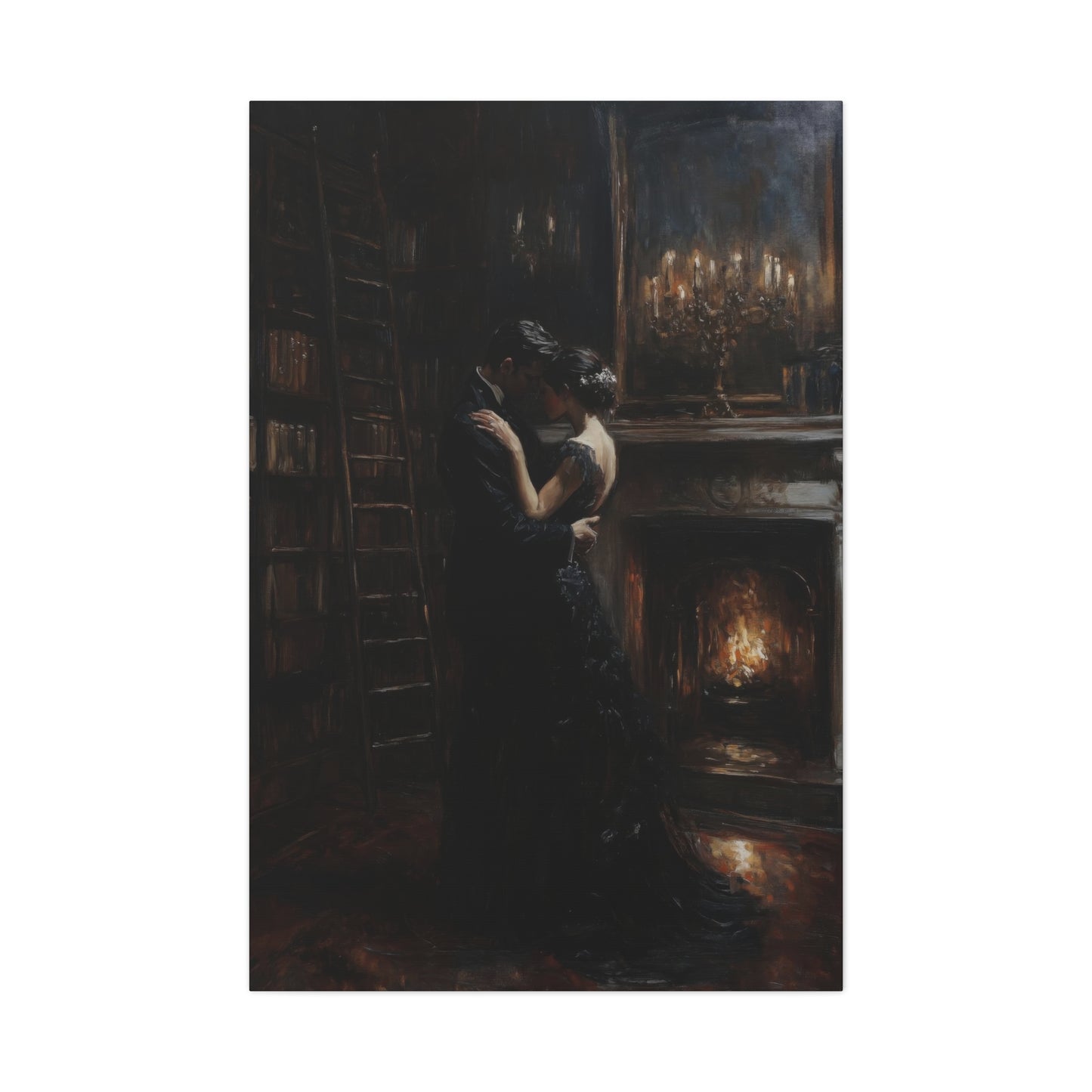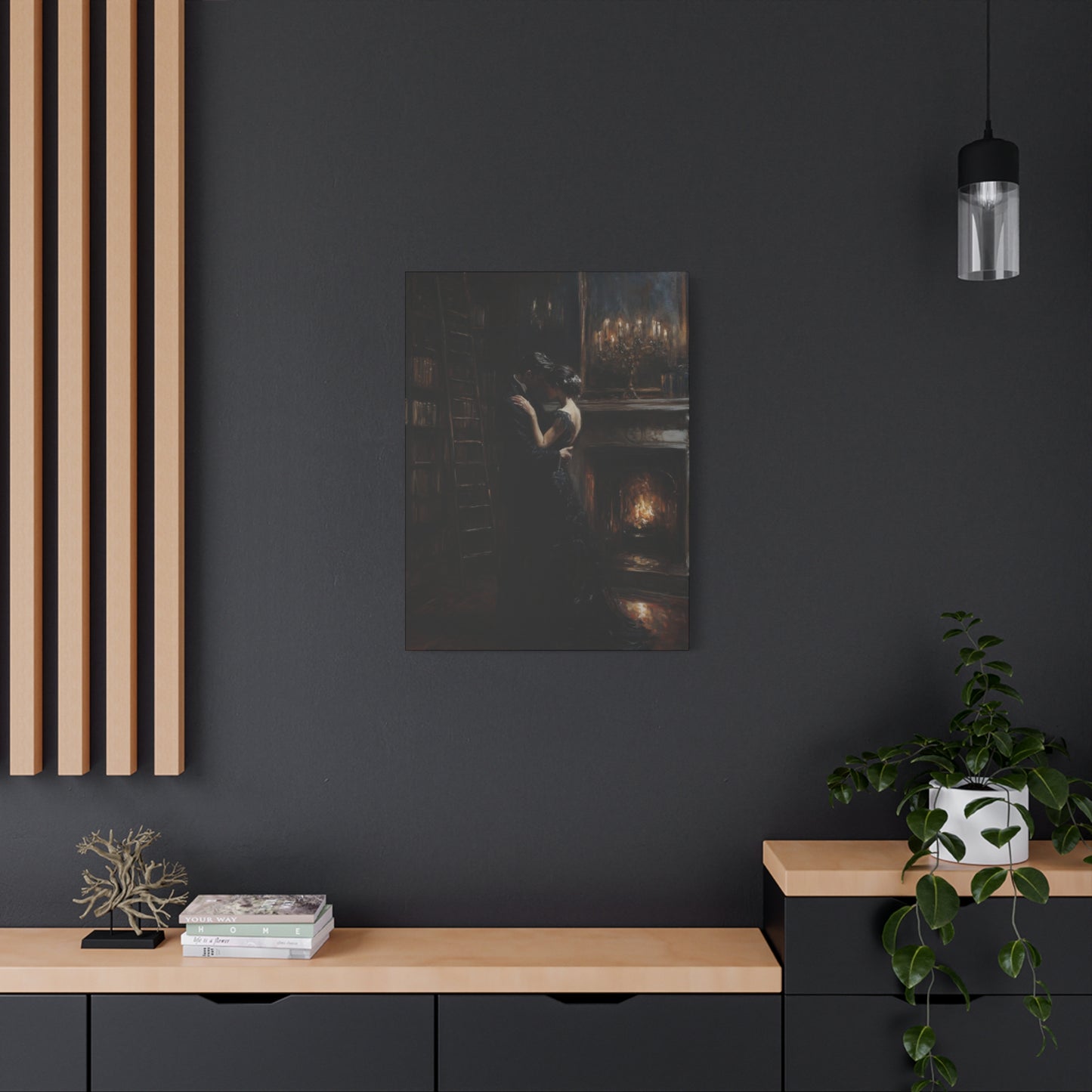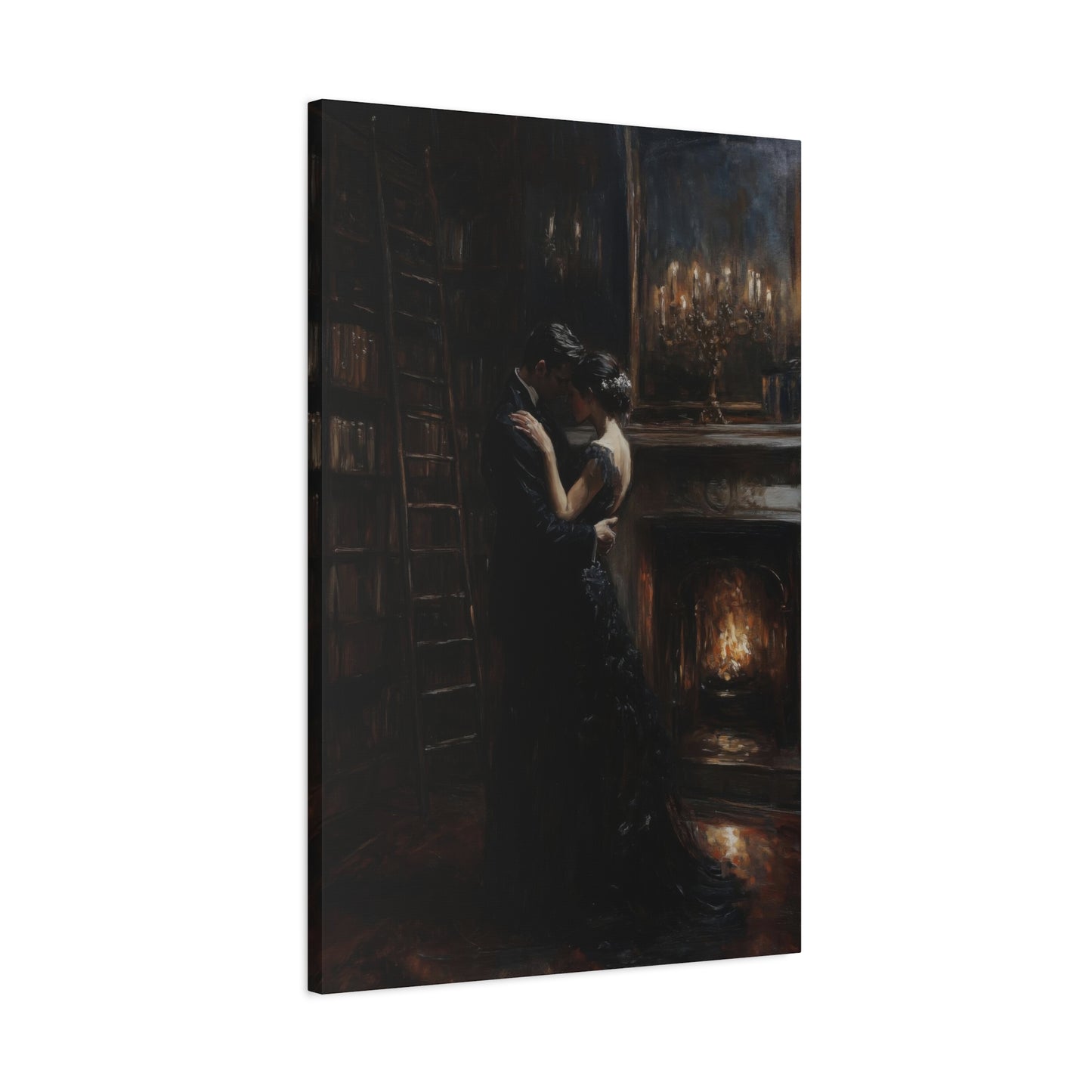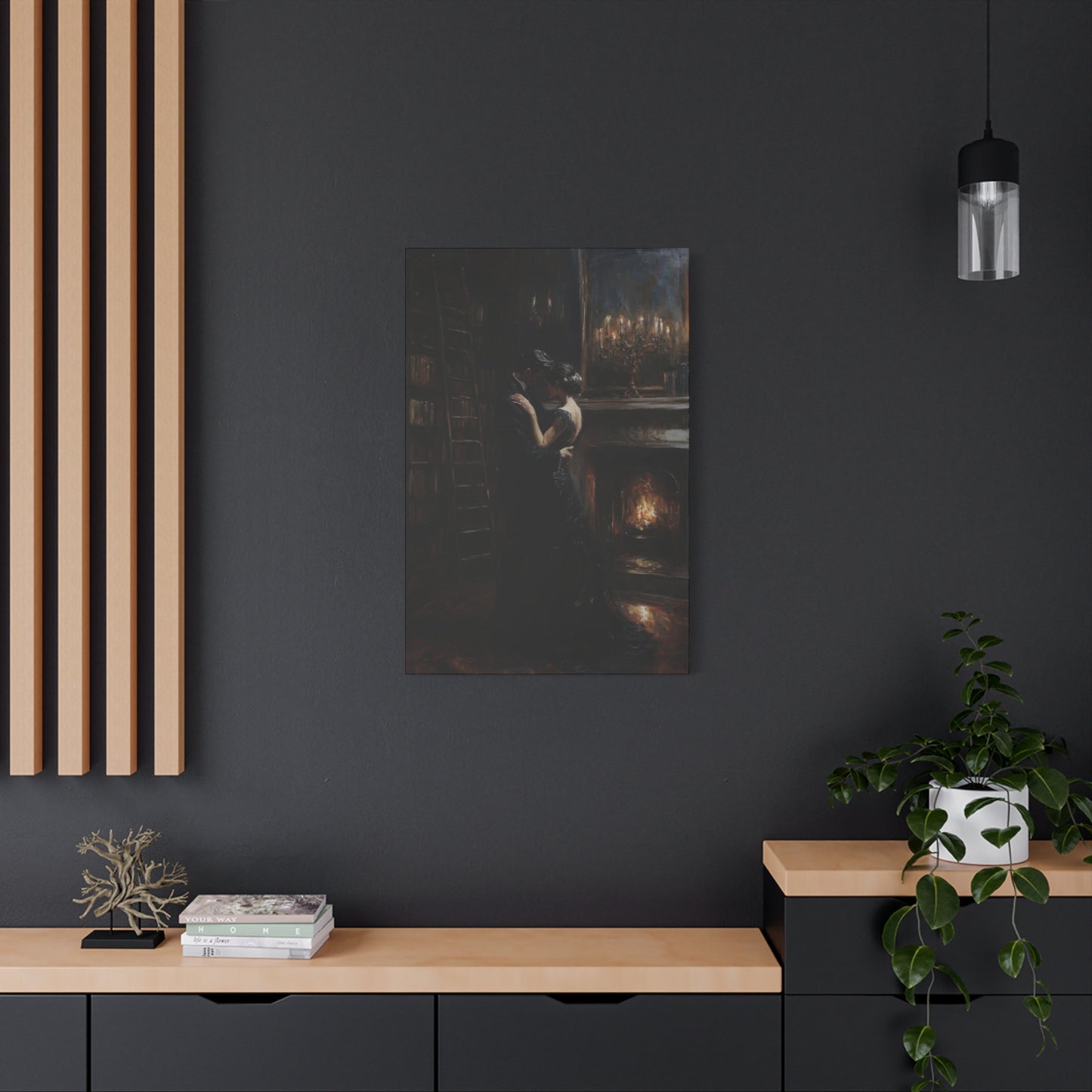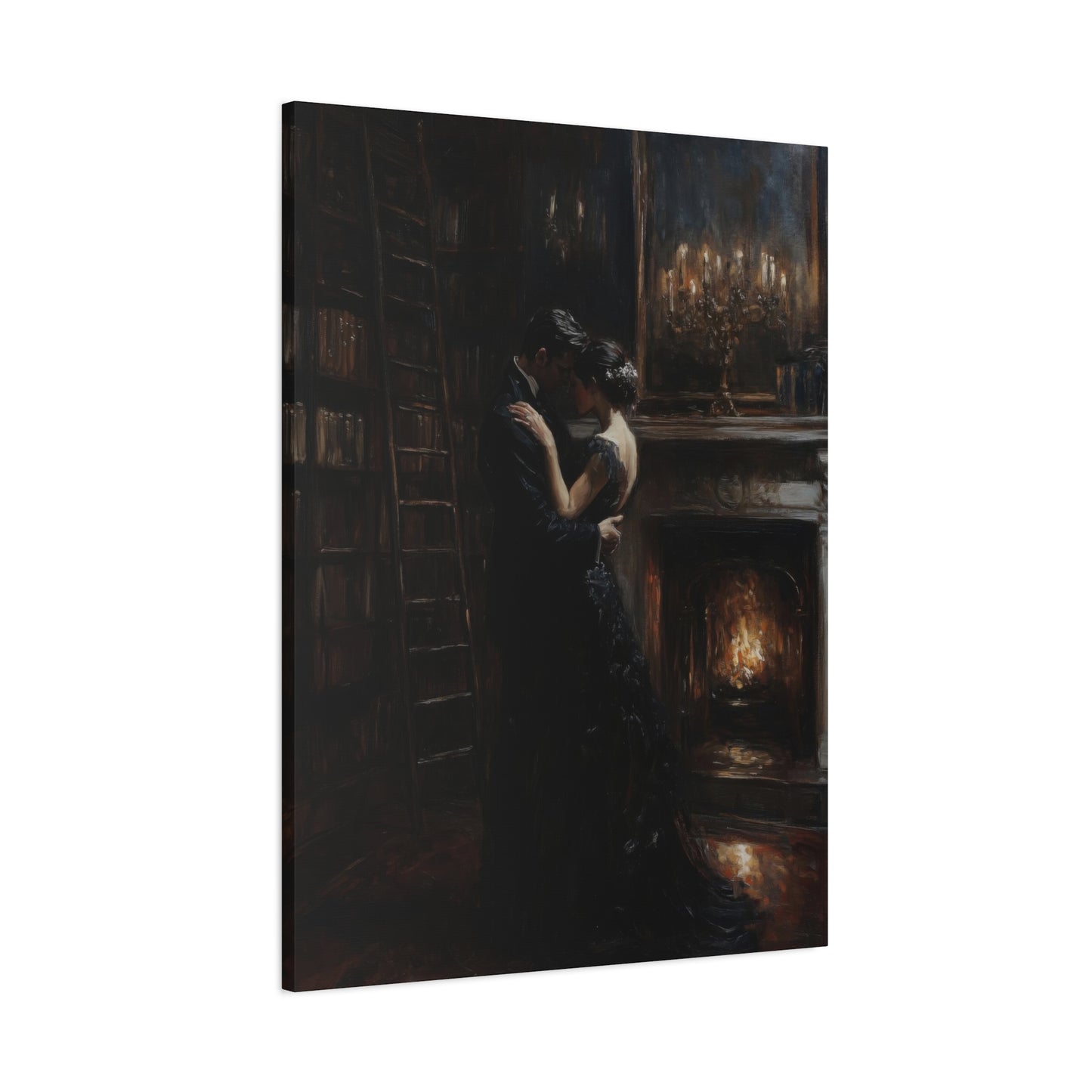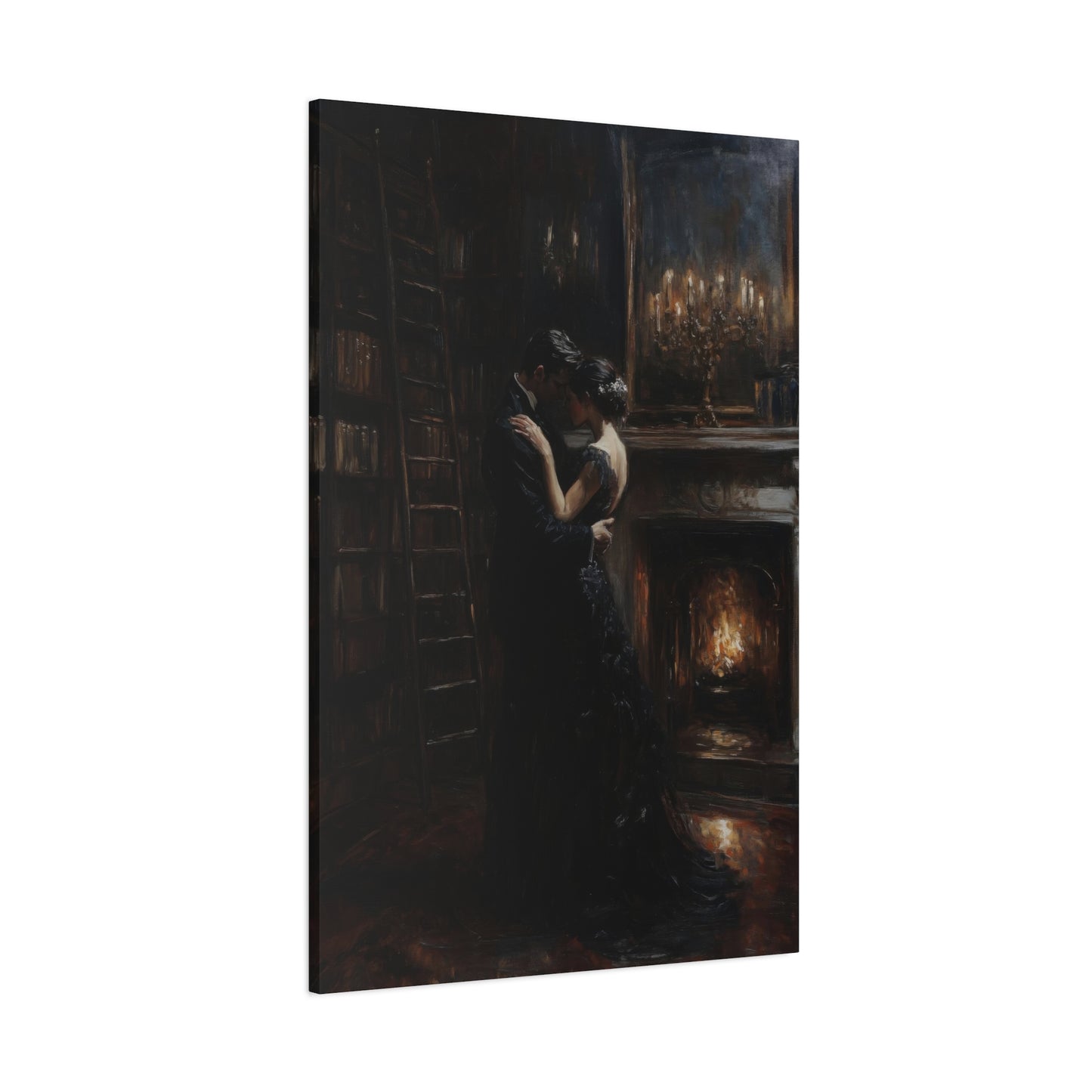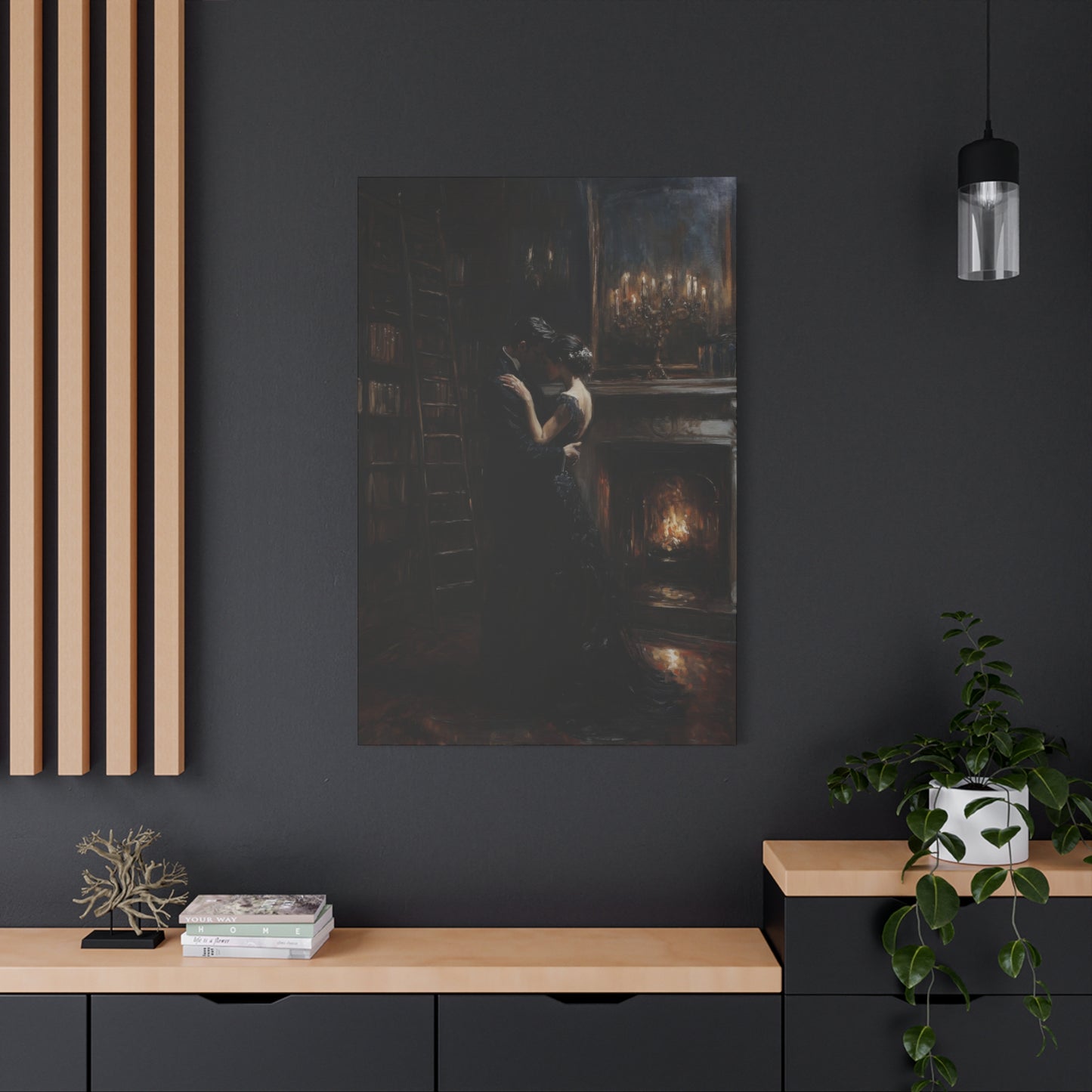Elegance in Motion: Exploring the Allure of Dancing Couple Ballroom Dark Wall Art
Dancing couple ballroom canvas prints have emerged as one of the most captivating ways to infuse romance, elegance, and dynamic energy into interior spaces. These artistic representations capture the timeless beauty of ballroom dancing, freezing moments of passion, grace, and connection that resonate deeply with viewers. Whether you're drawn to the dramatic contrast of dark-themed compositions or the soft elegance of romantic portrayals, ballroom dance artwork offers endless possibilities for transforming ordinary walls into extraordinary visual experiences.
The appeal of dancing couple canvas prints extends far beyond mere decoration. These pieces tell stories of human connection, celebrate the art of movement, and bring sophisticated cultural elements into everyday environments. From grand statement pieces that command attention in spacious living areas to intimate smaller prints perfect for personal spaces, ballroom dance art adapts beautifully to various settings and design preferences. The interplay of light and shadow, the fluidity of movement captured in stillness, and the emotional depth conveyed through dance positions create visual narratives that continue to captivate long after the initial viewing.
As interior design trends increasingly favor personalized, meaningful artwork that reflects individual tastes and passions, dancing couple ballroom canvas prints have secured their position as beloved decor choices. They bridge the gap between classical elegance and contemporary aesthetics, making them versatile additions to homes, offices, studios, and commercial spaces. This comprehensive exploration delves into every aspect of selecting, displaying, and appreciating ballroom dance canvas art, providing insights that will help you make informed decisions and create stunning visual compositions in your own spaces.
Choosing Dancing Couple Ballroom Canvas Prints
Selecting the perfect dancing couple ballroom canvas print requires thoughtful consideration of multiple factors that will influence both the aesthetic impact and the longevity of your investment. The first aspect to examine is the artistic style that resonates with your personal taste and complements your existing decor. Ballroom dance art spans a remarkable range of artistic interpretations, from photorealistic representations that capture every detail of costume and movement to impressionistic works that emphasize emotion and energy over precise detail. Some pieces feature vibrant colors that celebrate the joy and vitality of dance, while others employ muted palettes that evoke nostalgia and timeless elegance.
The composition of the artwork plays a crucial role in how it will function within your space. Full-body shots of dancing couples showcase the complete grace and posture that define ballroom dancing, highlighting the elegant lines created by extended limbs and carefully positioned bodies. Close-up compositions focus on the connection between partners, emphasizing facial expressions, hand positions, and the intimate space shared by dancers. Mid-range compositions balance these elements, providing enough detail to appreciate technique while maintaining the broader context of the dance. Consider how each compositional approach will work with your viewing distance and the purpose of the space where the artwork will hang.
Quality considerations are paramount when investing in canvas prints. High-resolution images ensure that details remain crisp and clear regardless of the print size, preventing pixelation or blurriness that can detract from the overall impact. Professional printing processes using archival inks guarantee color accuracy and longevity, protecting your investment from fading due to light exposure. The canvas material itself should be substantial enough to maintain tension on the frame without sagging over time, yet flexible enough to wrap smoothly around corners without cracking. Gallery-wrap construction, where the image extends around the edges of the frame, creates a polished, finished appearance that eliminates the need for additional framing.
The dance style depicted in your chosen artwork adds another layer of meaning and visual character. Traditional waltz scenes evoke romantic elegance and refined grace, with sweeping movements and close partnering that speak to timeless romance. Tango representations bring passionate intensity and dramatic tension, featuring sharp angles, deep lunges, and powerful connections between dancers. Foxtrot and quickstep images capture joyful energy and smooth sophistication, while contemporary ballroom styles blend classical technique with modern interpretation. Understanding these dance characteristics helps you select artwork that aligns with the emotional atmosphere you wish to create.
Color coordination with your existing decor ensures visual harmony while allowing the artwork to make its intended impact. Monochromatic schemes featuring blacks, whites, and grays offer versatility and timeless appeal, working seamlessly with nearly any color palette. Warm tones including golds, bronzes, and rich browns create inviting, cozy atmospheres that complement traditional and rustic decor. Cool blues, silvers, and purples bring sophisticated elegance to contemporary spaces. Bold accent colors in the artwork can either complement existing color schemes or introduce dynamic contrast that energizes the entire room.
Size selection requires careful measurement and visualization of how the artwork will relate to surrounding furniture and architectural features. A common guideline suggests that wall art should occupy roughly two-thirds to three-quarters the width of the furniture piece below it, creating visual balance and proportion. However, statement pieces intentionally break these conventions, commanding attention through their impressive scale. Consider ceiling height when selecting artwork for vertical spaces, as taller rooms accommodate larger pieces more gracefully. Multiple smaller pieces can be combined to create the visual impact of a single large work while offering more flexibility in arrangement.
The framing style, whether integrated into the canvas wrap or added separately, significantly influences the overall presentation. Floating frames create shadow gaps between the canvas edge and frame, adding dimensional depth and contemporary sophistication. Traditional frames with ornate detailing complement classical interiors and add formal elegance to the presentation. Frameless gallery wraps maintain focus entirely on the artwork itself, creating clean, modern presentations that work particularly well in minimalist settings. The frame color should either complement the artwork's palette or provide deliberate contrast that enhances rather than competes with the image.
Authentication and artist information add value and meaning to your selection. Limited edition prints numbered and signed by the artist carry greater collectible value than open edition reproductions. Original photography-based prints offer unique perspectives captured in specific moments, while digitally created artwork provides opportunities for customization and personalization. Understanding the provenance and creation process of your chosen piece enriches your connection to the artwork and provides interesting context for conversations with guests who admire your selection.
Romantic Ballroom Wall Art Ideas
Romantic ballroom wall art transforms ordinary spaces into environments filled with elegance, passion, and timeless beauty. The inherent romance of ballroom dancing, with its emphasis on partnership, grace, and emotional expression, translates beautifully into visual art that captures hearts and imaginations. Creating romantic atmospheres through carefully selected ballroom dance imagery involves understanding the elements that evoke feelings of love, connection, and sophisticated intimacy.
Soft lighting effects within the artwork itself play a crucial role in establishing romantic ambiance. Images featuring warm, diffused lighting create inviting, intimate atmospheres that draw viewers into the scene. Candlelit ballrooms or scenes bathed in golden hour light evoke nostalgic romance reminiscent of classic Hollywood glamour. Backlighting that creates silhouettes of dancing couples emphasizes their connection while adding mysterious allure. Spotlight effects that illuminate dancers while leaving surroundings in shadow create dramatic focus that heightens emotional intensity. These lighting techniques within the artwork influence how the piece interacts with the lighting in your actual space, creating layered effects that change throughout the day.
Color palettes specifically chosen for romantic impact include soft pastels that evoke gentleness and tender emotion. Blush pinks, lavender purples, and champagne golds create dreamy, ethereal qualities perfect for bedrooms and intimate spaces. Deep jewel tones including ruby reds, sapphire blues, and emerald greens bring luxurious romance with sophisticated intensity. Sepia and vintage-toned images evoke nostalgia and timeless love stories, connecting present moments with romantic traditions of the past. Monochromatic treatments in warm grays create elegant sophistication that feels both contemporary and timeless.
Composition choices that emphasize romantic connection include close-up perspectives that focus on the intimate space between partners. Hand details showing gentle touches, protective holds, and tender connections communicate volumes about the relationship between dancers. Facial expressions captured in moments of genuine emotion, whether joyful laughter or intense concentration, invite viewers to share in the experience. Full-body compositions that show partners moving in perfect harmony demonstrate the trust, communication, and unity essential to both dance and romance.
Flowing movement captured in the artwork adds dynamic energy to romantic presentations. Swirling skirts and extended fabric create visual poetry that suggests grace and femininity. Ribbon-like quality in the lines created by dancers' bodies leads the eye through the composition in smooth, satisfying paths. Frozen moments at the peak of lifts or spins capture the exhilaration and trust inherent in partnered dance. These movement qualities bring life and energy to still images, preventing romantic artwork from feeling static or stiff.
Complementary decor elements enhance the romantic impact of ballroom dance artwork. Soft textiles including velvet, silk, and satin echo the luxurious costumes often featured in dance imagery. Metallic accents in gold, rose gold, or silver add touches of glamour that complement the elegance of ballroom settings. Fresh or artificial flowers in arrangements that mirror the artwork's color palette create cohesive romantic environments. Ambient lighting through candles, string lights, or dimmed fixtures establishes the mood while allowing the artwork to remain a focal point.
Placement strategies maximize the romantic impact of ballroom dance art. Bedroom locations naturally suit romantic imagery, creating environments that celebrate partnership and intimacy. Positioning artwork where it catches natural light during golden hours takes advantage of changing illumination throughout the day. Above-bed placement creates a canopy effect that makes the artwork the last thing seen before sleep and the first thing noticed upon waking. Dressing areas and closets with romantic dance art inspire daily routines with elegance and grace.
Paired artwork arrangements featuring complementary dancing couple images create visual dialogue and balance. Matching frames with coordinated but not identical images add interest while maintaining cohesion. Diptych presentations split a single dancing scene across two canvases, creating engaging compositions that reward closer examination. Series showing different moments in a single dance or different dance styles provide narrative progression that keeps the eye moving and engaged.
Seasonal adaptations allow romantic ballroom art to remain fresh and relevant throughout the year. Winter presentations might emphasize rich, warm tones and intimate indoor scenes. Spring arrangements could incorporate lighter, airier compositions with pastel accents. Summer displays might feature outdoor dance scenes or lighter, more energetic compositions. Autumn presentations could embrace deeper, more dramatic tones and golden lighting effects. Rotating supporting decor elements while keeping the central artwork constant maintains visual interest without requiring major changes.
Decorating with Dancing Couple Canvas Art
Decorating with dancing couple canvas art offers endless creative possibilities for transforming spaces into elegant, sophisticated environments that celebrate the beauty of movement and human connection. The versatility of ballroom dance imagery allows it to function successfully in diverse settings, from formal living rooms to casual family spaces, professional offices to creative studios. Mastering the art of incorporating these pieces into your overall design scheme requires understanding principles of balance, proportion, and visual flow.
Room-specific approaches recognize that different spaces serve different purposes and thus benefit from tailored artwork selections. Living rooms, as primary gathering spaces, accommodate larger, more dramatic pieces that serve as conversation starters and focal points. The social nature of these spaces aligns perfectly with the partnership aspect of ballroom dancing, creating thematic coherence between function and decoration. Dining rooms benefit from energetic, celebratory dance imagery that complements the communal experience of shared meals. The formal elegance of many ballroom scenes enhances the sophistication of dining experiences.
Color coordination strategies ensure that dancing couple canvas art enhances rather than clashes with existing design schemes. Analogous color approaches use artwork featuring colors adjacent on the color wheel to those already present in the room, creating harmonious, cohesive environments. Complementary color strategies employ artwork with colors opposite existing scheme colors on the color wheel, introducing dynamic visual interest and energizing contrast. Monochromatic approaches feature artwork in various shades and tints of a single color family already present in the space, adding depth without introducing new colors. Neutral-based artwork provides flexibility, working with virtually any color scheme while allowing colorful furnishings and accessories to take the spotlight.
Scale and proportion considerations prevent artwork from appearing lost on vast walls or overwhelming in smaller spaces. The golden ratio, a mathematical proportion found throughout nature and classical art, can guide artwork sizing and placement decisions for naturally pleasing results. Multiple related pieces arranged in grid patterns create substantial visual impact while maintaining individual piece sizes that feel appropriate to the space. Asymmetrical arrangements using varied sizes create dynamic, contemporary presentations that draw the eye through deliberate visual pathways. Leaving adequate negative space around artwork allows each piece to breathe and prevents walls from feeling cluttered or overwhelming.
Furniture arrangements should support and complement rather than compete with artwork. Seating positioned to face or angle toward significant artwork pieces encourages viewing and appreciation. Console tables, credenzas, or shelving units placed below artwork create platforms for supporting decor elements that enhance the overall presentation. Maintaining clear sight lines from primary viewing positions ensures that artwork can be appreciated from key locations within the room. Avoiding placement behind frequently occupied furniture prevents artwork from being hidden or ignored during daily activities.
Lighting design dramatically impacts how dancing couple canvas art appears and how effectively it fulfills its decorative purpose. Picture lights mounted directly to frames or walls above artwork provide focused illumination that highlights details and prevents artwork from disappearing in dim conditions. Track lighting offers flexible solutions for illuminating multiple pieces or adjusting focus as arrangements change. Recessed spotlights create gallery-quality presentation with clean, unobtrusive fixtures. Natural light from windows adds dimension and changing character throughout the day, though direct sunlight should be avoided to prevent fading. Ambient room lighting should be sufficient to appreciate artwork without creating glare or reflection on canvas surfaces.
Layering artwork with other decorative elements creates rich, collected appearances that feel curated rather than newly purchased. Overlapping frames in gallery wall arrangements adds depth and visual interest. Positioning plants, sculptures, or decorative objects on surfaces below artwork creates vertical visual connections. Incorporating mirrors near or between artwork pieces reflects light and creates illusions of expanded space. Textile elements including curtains, throw pillows, and area rugs echo colors and themes present in the artwork, weaving cohesive visual narratives throughout the space.
Transitional spaces including hallways, staircases, and entryways benefit greatly from dancing couple canvas art. These often-neglected areas become gallery-like passages that add value to the entire home. Long hallway walls accommodate series of related images that create narrative journeys as one moves through the space. Stairway walls provide opportunities for dynamic arrangements that follow ascending or descending angles. Entry areas make powerful first impressions with significant artwork pieces that immediately communicate the home's aesthetic character.
Unexpected placements demonstrate creativity and personal style. Bathroom walls, often left bare or minimally decorated, become spa-like retreats with appropriate artwork. Laundry rooms transform from purely utilitarian spaces into pleasant environments with visual interest. Walk-in closets and dressing areas become elegant preparation spaces when adorned with sophisticated dance imagery. Home gyms and exercise spaces find thematic connection with movement-based artwork that inspires physical activity. These unconventional locations show thoughtfulness and attention to detail that elevates the entire home.
The Allure of Dark-Themed Dance Art
Dark-themed dance art possesses a magnetic quality that draws viewers into worlds of mystery, drama, and intense emotion. The deliberate use of shadowy backgrounds, deep color palettes, and dramatic lighting creates powerful visual statements that command attention and evoke strong responses. This aesthetic approach to ballroom dance imagery offers alternative sophistication to lighter, more traditional romantic presentations, appealing to those who appreciate edgier, more contemporary artistic expressions.
Psychological impact of dark artwork creates specific atmospheric effects in interior spaces. Dark tones recede visually, making walls appear more distant and rooms feel larger and more expansive. The dramatic contrast between illuminated subjects and dark backgrounds focuses attention intensely on the dancers themselves, eliminating distractions and emphasizing movement and form. Dark artwork in well-lit rooms creates striking focal points without overwhelming the space, while in dimly lit rooms it creates intimate, cocoon-like environments. The emotional weight of dark imagery adds gravitas and sophistication that lighter artwork cannot achieve, making spaces feel more mature and intentionally designed.
Artistic techniques specific to dark-themed dance art include chiaroscuro, the dramatic contrast between light and dark that has been employed by master artists for centuries. This technique creates three-dimensional form through strategic illumination, making dancers appear to emerge from darkness with sculptural presence. Low-key lighting, where most of the composition exists in shadow with selective highlights, creates mysterious, film-noir atmospheres. Silhouette treatments reduce dancers to pure form, emphasizing shape and posture while eliminating details that might distract from the essential beauty of the dance pose. These approaches require sophisticated artistic skill to execute effectively, making high-quality dark-themed pieces particularly valuable.
Color palettes within dark-themed artwork extend beyond simple black backgrounds. Deep navy blues create moody, nocturnal atmospheres with subtle color variation. Rich burgundies and dark wines add warmth and sensuality to dramatic presentations. Charcoal grays with hints of violet or green undertones provide sophisticated alternatives to pure black. Metallic accents in silver, gold, or bronze emerge dramatically from dark backgrounds, adding touches of luxury and glamour. These carefully considered color choices prevent dark artwork from feeling heavy or depressing while maintaining the dramatic impact that defines this aesthetic.
Subject matter particularly suited to dark-themed presentation includes tango, with its inherent passion and intensity. The close embraces, sharp angles, and dramatic poses characteristic of tango find perfect expression against dark backgrounds. Theatrical or stage performances captured in moments of dramatic lighting naturally lend themselves to this treatment. Classical ballet positions translated into ballroom contexts create elegant, sculptural presentations. Contemporary fusion styles that blend traditional ballroom with modern dance achieve striking visual impact through dark, minimalist presentation.
Interior design styles that particularly complement dark-themed dance art include industrial aesthetics with exposed brick, metal fixtures, and raw concrete surfaces. Modern minimalist spaces with clean lines and limited color palettes provide perfect canvases for dramatic dark artwork. Gothic-inspired interiors embrace the romantic darkness that characterizes this aesthetic. Masculine-leaning designs with leather, dark woods, and substantial furnishings find natural partners in dark dance imagery. Art deco and Hollywood regency styles, with their emphasis on drama and glamour, beautifully incorporate this artwork category.
Placement considerations specific to dark-themed pieces recognize that these works function differently than lighter alternatives. Against light-colored walls, dark artwork creates bold contrast that makes powerful statements. On dark or richly colored walls, these pieces create sophisticated, enveloping environments where artwork and walls work together rather than in contrast. In rooms with multiple light sources, changing illumination throughout the day creates varying effects as different areas of the composition catch light. Positioning dark artwork where it catches artificial light in the evening ensures it remains visible and impactful during primary use hours.
Balancing dark artwork within overall design prevents spaces from feeling too heavy or somber. Incorporating lighter furniture pieces creates visual relief and prevents rooms from feeling cave-like. Using metallic or reflective surfaces bounces light and adds sparkle that enlivens dark schemes. Including living plants introduces organic elements and life force that balance the intensity of dark artwork. Maintaining adequate artificial lighting ensures spaces remain functional and welcoming rather than oppressively dark. These balancing strategies allow you to enjoy the dramatic sophistication of dark dance art without sacrificing comfort or livability.
Large Ballroom Canvas for Statement Walls
Large ballroom canvas pieces transform ordinary walls into breathtaking focal points that define entire rooms and create unforgettable visual experiences. These substantial artworks demand attention, anchor design schemes, and make bold statements about personal style and aesthetic priorities. Successfully incorporating oversized dancing couple canvases requires understanding scale relationships, visual weight, and the dramatic impact these pieces create within living spaces.
Determining appropriate sizing for statement pieces involves careful consideration of wall dimensions and room proportions. A general guideline suggests leaving several inches of wall space visible on all sides of the artwork to prevent it from appearing crammed or cramped. For walls above substantial furniture pieces, artwork measuring approximately two-thirds to three-quarters the width of the furniture below creates pleasing visual relationships. Empty walls without furniture below can accommodate even larger pieces, with some dramatic installations featuring artwork that spans nearly wall-to-wall. Ceiling height significantly impacts how large artwork appears, with higher ceilings accommodating taller pieces more gracefully while standard eight-foot ceilings require more restrained dimensions to avoid overwhelming proportions.
Visual weight and presence extend beyond mere measurements to encompass how artwork commands attention within the space. Dark-toned large canvases carry significant visual weight, making them feel even more substantial than their actual dimensions might suggest. Bright, light-colored large pieces feel somewhat lighter despite equivalent sizing. Busy, detailed compositions create greater visual impact than minimalist treatments of similar size. Understanding these principles helps predict how a large piece will function within your specific space and allows you to make selections that achieve your desired effect.
Installation considerations for large canvas pieces require more planning than smaller alternatives. Wall anchoring must be adequate to support the weight, which increases substantially with size. Professional installation may be advisable for particularly large or heavy pieces, ensuring secure mounting and proper leveling. Planning for future removal or relocation should influence mounting methods, as damage to walls or artwork during these processes can be costly. Two-person installations prevent accidents and ensure safe handling of unwieldy pieces. Considering doorway dimensions, stairway widths, and hallway turns before purchasing prevents the disappointment of acquiring artwork that cannot physically reach its intended location.
Room types particularly suited to large ballroom canvas include living rooms, where substantial wall space and social functions justify dramatic artwork. Primary bedrooms in spacious homes provide opportunities for impressive headboard-alternative installations. Formal dining rooms with traditional proportions accommodate large pieces that enhance the sophistication of the space. Home theaters and media rooms benefit from large-scale artwork that transforms walls during non-viewing times. Double-height entryways make powerful first impressions with carefully selected oversized pieces. Commercial spaces including hotel lobbies, event venues, and upscale restaurants employ large ballroom canvas art to establish elegant, sophisticated atmospheres.
Complementary design elements support rather than compete with large statement pieces. Furniture arrangements should respect the artwork by maintaining clear sight lines and avoiding placement that blocks portions of the piece. Color schemes can either derive from the artwork, pulling accent colors from the canvas throughout the room, or provide complementary backgrounds that allow the artwork to shine. Lighting designed specifically for the piece ensures it remains visible and impactful during all use times. Additional decorative elements should be carefully edited to prevent visual competition and allow the statement piece to fulfill its role as the focal point.
Multi-panel large-scale options provide flexibility and impact while breaking the mass into manageable sections. Triptych presentations split a single scene across three canvases, creating gallery-quality installations with built-in visual rhythm. Diptych arrangements pair two complementary or contrasting images for dynamic presentations. Multi-piece sets including five or more panels create sweeping panoramic effects that completely transform walls. These multi-panel approaches offer practical advantages including easier handling during installation, flexibility in spacing between panels, and the ability to navigate doorways and stairs that would prevent single large pieces from reaching their destinations.
Investment considerations for large statement pieces recognize the significant commitment these purchases represent. Quality becomes even more critical at larger sizes, as flaws or mediocre printing become more noticeable. Limited edition or original large-scale pieces carry greater collectible value and potential appreciation. Custom commissioning allows for personalization and ensures absolutely unique results. Proper care and maintenance protect these significant investments for decades of enjoyment. Documentation including certificates of authenticity and artist information adds value and provides important records for insurance purposes.
Small Dancing Couple Prints for Cozy Spaces
Small dancing couple prints offer intimate charm and versatile decorative solutions perfect for cozy spaces, personal areas, and situations where subtle elegance is preferred over bold statements. These more modest-sized artworks bring all the beauty and sophistication of ballroom dance imagery into spaces where larger pieces would overwhelm or simply not fit. Understanding how to effectively incorporate smaller prints ensures they provide meaningful visual impact despite their reduced dimensions.
Size ranges typically considered small include pieces measuring approximately eight by ten inches up to sixteen by twenty inches, though definitions vary based on context and surrounding elements. These dimensions work beautifully in spaces with limited wall area, including small bedrooms, home offices, powder rooms, and apartment living areas. They provide options for renters or those hesitant to commit to larger installations. Small prints allow for more experimental choices, as the investment of both money and wall space is less significant than with larger alternatives.
Arrangement strategies maximize the impact of small dancing couple prints through thoughtful grouping and placement. Gallery walls combining multiple small pieces create substantial visual presence through collective impact. Grid arrangements featuring identical-sized frames in precise alignments create organized, contemporary presentations. Asymmetrical collections mixing various sizes generate dynamic, collected appearances. Salon-style arrangements with frames touching or nearly touching create traditional, European gallery atmospheres. These grouping approaches transform multiple small pieces into cohesive installations that command attention and fill wall space effectively.
Proportional considerations ensure small prints relate appropriately to surrounding furniture and architectural features. Matching print width to smaller furniture pieces including nightstands, narrow console tables, and writing desks creates balanced relationships. Vertical stacking of small prints adds height and draws the eye upward in rooms with low ceilings. Horizontal arrangements widen visual impact without requiring large individual pieces. Positioning small prints at appropriate eye level, generally centered around fifty-seven to sixty inches from the floor, ensures comfortable viewing regardless of their modest dimensions.
Frame selection significantly impacts how small prints appear and function within spaces. Substantial, wider frames add presence and help small artworks hold their own on walls. Matting creates separation between image and frame while increasing overall dimensions, making small prints more prominent. Coordinated frame colors and styles across multiple small pieces create cohesion in gallery arrangements. Contrasting frame choices add personality and collected charm to eclectic presentations. The frame essentially becomes part of the artwork itself at smaller scales, making these choices particularly important.
Location-specific applications take advantage of the unique strengths of small dancing couple prints. Bedside walls in close viewing positions allow appreciation of fine details that might be lost in larger pieces. Powder room walls transform these small spaces into jewel-box environments. Office desk areas provide personal inspiration without dominating professional settings. Kitchen nooks and breakfast areas add charm to casual spaces. Stairway walls accommodate series of small prints that create narrative progression. Closet and dressing room walls bring unexpected elegance to utilitarian spaces.
Budget-friendly advantages make small prints accessible to those with limited resources while still delivering sophisticated style. Lower price points allow for experimentation with different styles and themes. The ability to purchase multiple pieces over time creates curated collections that evolve with changing tastes. Small prints provide opportunities to acquire works by sought-after artists whose larger pieces might be prohibitively expensive. The reduced financial commitment makes trying new placement locations less stressful, encouraging creative experimentation.
Personal and intimate qualities inherent in smaller artwork create different emotional experiences than grand statement pieces. Close viewing distances reveal details and craftsmanship that reward careful attention. The modest scale feels less formal and more approachable, making spaces feel comfortable and livable. Small prints in personal spaces like bedrooms and home offices create private moments of beauty for individual enjoyment rather than public display. These qualities make small dancing couple prints particularly appropriate for spaces where intimacy and personal connection are priorities.
Custom Ballroom Dance Art Options
Custom ballroom dance art options open exciting possibilities for truly personalized decor that reflects individual experiences, preferences, and meaningful connections to dance. Rather than selecting from existing images, commissioning custom pieces ensures absolutely unique results that cannot be found in anyone else's home. Understanding the various approaches to customization helps you navigate the process and achieve results that exceed expectations.
Photography-based custom options transform personal dance experiences into stunning wall art. Hiring professional dance photographers to capture specific moments creates original artwork with deep personal meaning. Transforming existing photographs from special events including weddings, anniversaries, or dance competitions into canvas prints preserves memories in beautiful, displayable formats. Working with photographers who specialize in dance ensures technical expertise in capturing movement, working with stage lighting, and finding flattering angles that showcase both dancers and their connection. Post-processing and artistic enhancement can transform straightforward photographs into artwork with painterly or stylized qualities.
Digital illustration and painting services create artwork based on photographs, descriptions, or concepts you provide. Digital artists can work in virtually unlimited styles, from photorealistic renderings to impressionistic interpretations, minimalist line drawings to richly detailed compositions. Providing reference photographs as starting points allows artists to capture specific poses, costumes, and settings while applying creative interpretation. Describing desired moods, color palettes, and stylistic preferences guides artists toward results that match your vision. Multiple revision rounds ensure satisfaction before final printing, eliminating concerns about committing to results that miss the mark.
Personalization elements transform standard ballroom dance imagery into pieces with special significance. Adding names, dates, or meaningful phrases commemorates specific events or relationships. Incorporating specific costume details, venue elements, or decorative motifs creates connections to personal experiences. Requesting particular dance styles or positions that hold special meaning ensures the artwork resonates on deeper levels. Color customization to match existing decor or personal preferences creates perfect coordination with your space.
Original artist commissions represent the highest level of customization, resulting in one-of-a-kind pieces created specifically for you. Researching artists whose existing work aligns with your aesthetic preferences increases the likelihood of satisfying results. Discussing concepts, references, and expectations clearly before beginning prevents misunderstandings. Understanding the artist's process, timeline, and revision policies establishes realistic expectations. Original commissions require greater investment of both money and time but deliver unparalleled uniqueness and potential collectible value.
Size and format customization ensures artwork fits perfectly in intended spaces. Providing exact wall measurements and desired proportions to custom artists or print services eliminates sizing concerns. Choosing between standard formats or unusual dimensions like panoramic horizontal or dramatic vertical creates distinctive results. Deciding between single large pieces or multi-panel sets influences both the creation process and final installation. Custom sizing accommodates challenging spaces including angled walls, stairways, or unusually proportioned rooms that standard artwork cannot address.
Canvas and printing specifications allow technical customization that impacts durability, appearance, and longevity. Selecting premium canvas materials ensures superior texture and longevity. Choosing between glossy, matte, or satin finishes affects how the piece appears under various lighting conditions. Specifying archival, fade-resistant inks protects your investment for decades. Requesting hand-embellishment with actual paint or metallic elements adds dimension and unique character. Gallery wrap depth options, ranging from standard three-quarter inch to dramatic two-inch or deeper profiles, influence the three-dimensional presence of the finished piece.
Collaborative creative processes make commissioning custom artwork rewarding beyond simply acquiring decor. Communicating with artists about your vision, providing feedback, and witnessing the creation process creates invested interest in the final piece. Learning about techniques, artistic choices, and the work involved in creating your piece deepens appreciation. Building relationships with artists can lead to future commissions and ongoing creative partnerships. The story behind custom artwork becomes part of its value, creating conversation pieces with rich narratives.
Practical considerations ensure smooth custom artwork experiences. Establishing clear timelines with buffer periods prevents deadline stress for gifts or room completion projects. Understanding payment structures, typically including deposits before work begins and final payments upon approval, prepares you financially. Clarifying ownership rights, particularly for photography-based work, ensures you can legally reproduce or display images as intended. Requesting digital files in addition to physical prints provides flexibility for future reproductions or alternate applications. Written agreements documenting all specifications, timelines, and expectations protect both parties and prevent disputes.
Caring for Ballroom Canvas Prints
Caring for ballroom canvas prints properly ensures these beautiful pieces remain vibrant, clean, and structurally sound for many years of enjoyment. While canvas prints are relatively durable compared to some artwork forms, they still require appropriate handling, placement, and maintenance to preserve their appearance and value. Understanding conservation principles and implementing simple protective measures makes the difference between artwork that deteriorates quickly and pieces that become lasting parts of your home.
Environmental factors significantly impact canvas print longevity. Direct sunlight causes fading, color shifts, and material degradation over time, making it the single most damaging element to avoid. Even UV-resistant inks will eventually fade under constant sun exposure. Positioning artwork away from windows or using window treatments that filter UV rays protects your investment. Rooms with southern exposures in the northern hemisphere receive the most intense sun and require particular caution. Eastern and western windows expose artwork to direct sun during morning and evening hours respectively. Northern-facing walls in the northern hemisphere receive minimal direct sun and offer the safest placement options.
Temperature and humidity fluctuations stress canvas materials, causing expansion, contraction, and potential structural damage. Extremely dry conditions can make canvas brittle and prone to cracking. High humidity encourages mold growth and causes canvas to sag. Maintaining moderate, stable conditions between sixty-five and seventy-five degrees Fahrenheit with forty to fifty percent relative humidity provides ideal environments. Avoiding placement above heat sources including radiators, fireplaces, and heating vents prevents damage from rising hot air. Air conditioning vents blowing directly on artwork can cause similar problems. Unheated or uncooled spaces including garages, attics, and outdoor areas are unsuitable for canvas print display.
Dust and dirt accumulation dulls appearance and, over time, can work into canvas texture, becoming difficult to remove. Regular gentle cleaning prevents buildup. Using soft, clean microfiber cloths or feather dusters, gently remove surface dust every few weeks or as needed. Working from top to bottom prevents redistributing dust. Avoiding circular motions in favor of straight, gentle strokes prevents grinding particles into the canvas. Never using spray cleaners, water, or household cleaning products on canvas prints protects the inks and materials. Excessive pressure during cleaning can damage the canvas structure or printed surface.
Handling artwork properly during moving, cleaning, or rearranging prevents accidental damage. Always grasping canvas prints by the frame rather than the canvas itself avoids oils from hands transferring to the artwork. Using two hands for anything beyond very small pieces prevents dropping or bending. Setting artwork down carefully on protective surfaces rather than directly on floors or rough surfaces prevents scratches and abrasions. When transporting artwork, wrapping pieces in clean, soft materials provides cushioning and protection. Avoiding stacking multiple pieces without protective separation prevents scratches from frames and hardware.
Inspection routines help identify developing problems before they become serious. Periodically checking for loose hanging hardware and tightening as needed prevents falls. Examining canvas tension to ensure it remains taut on the frame catches early sagging that can be corrected. Looking for signs of mold, mildew, or insect damage allows quick intervention if problems develop. Checking for fading by comparing visible portions to edges normally covered by frames reveals whether sun exposure is causing damage. These regular inspections take only moments but can prevent costly damage.
Professional conservation becomes necessary when damage occurs or preventive treatment is desired. Art conservators can address various problems including repairing tears, restoring faded areas, treating mold damage, and remounting sagging canvas. UV-protective glazing can be added to particularly valuable pieces requiring extra protection. Climate-controlled storage provides ideal conditions when artwork needs temporary removal from display. Appraisals and condition reports document the state of valuable pieces for insurance purposes. Professional services represent investments that protect more significant investments in the artwork itself.
Long-term storage requires proper preparation when artwork must be temporarily removed from display. Wrapping clean, dry canvas prints in acid-free paper protects surfaces without causing damage. Storing flat rather than upright prevents warping and frame damage. Climate-controlled storage units maintain appropriate conditions when home storage options are inadequate. Avoiding plastic wrapping that can trap moisture and encourage mold growth protects artwork better than seemingly protective plastic covers. Periodic inspection of stored pieces ensures problems haven't developed unnoticed. Proper storage allows artwork to remain in excellent condition until it can return to display.
Insurance and documentation protect valuable canvas prints against loss, theft, or damage. Photographing artwork from multiple angles creates records of condition and appearance. Retaining purchase receipts, certificates of authenticity, and artist information documents value and provenance. Updating homeowners or renters insurance to specifically cover valuable artwork ensures adequate compensation if the worst occurs. Providing insurers with appraisals for particularly valuable pieces establishes agreed-upon values. Digital backups of all documentation stored separately from the physical artwork ensure records survive even if the artwork does not. These administrative tasks feel less exciting than displaying beautiful artwork but provide important protection for your investments.
Mixing Romantic Art with Modern Decor
Mixing romantic art with modern decor creates visually striking spaces that celebrate both classical elegance and contemporary design sensibilities. This design approach highlights a sophisticated understanding of how elements that might initially seem at odds can, in fact, complement one another, resulting in interiors that feel layered, dynamic, and full of personality. Romantic art, such as dancing couple canvas prints, brings warmth, emotion, and a timeless charm to any space. When paired thoughtfully with modern furnishings, clean architectural lines, and minimalist color palettes, these artworks become focal points that elevate the overall ambiance without overwhelming the room.
The key to successfully blending romantic art with modern decor lies in balance. Modern design often emphasizes simplicity, function, and open spaces, while romantic artwork thrives on emotion, movement, and narrative depth. By selecting art that resonates with the room’s existing color scheme or using accent pieces to echo the painting’s tones, homeowners can create a harmonious dialogue between old-world romance and contemporary aesthetics. For example, a large canvas depicting a dancing couple in muted pastels can be perfectly offset by sleek, neutral-toned furniture, subtle metallic accents, or glass and acrylic elements, allowing the artwork to shine while the room maintains a clean, modern feel.
Layering textures and materials can also enhance the interplay between romantic and modern elements. Soft fabrics, plush rugs, and elegant drapery complement the expressive qualities of romantic art, while polished surfaces and minimalist furniture preserve the contemporary vibe. Lighting plays a crucial role as well; strategically placed spotlights or wall-mounted fixtures can highlight the emotional depth of the artwork, creating an intimate atmosphere that invites viewers to linger.
Ultimately, blending romantic art with modern decor is an exercise in thoughtful contrast. When done carefully, it transforms a living space into an environment that feels both timeless and current, offering visual interest, emotional resonance, and a unique reflection of personal taste. This design approach proves that classical artistry and modern minimalism can coexist beautifully, resulting in interiors that are as elegant as they are inviting.
Conclusion:
Elegance in Motion, as captured through dancing couple ballroom dark wall art, exemplifies the captivating fusion of artistry, movement, and emotional storytelling in interior décor. This genre of wall art transcends mere decoration to become a dynamic narrative of grace, passion, and human connection. By depicting couples mid-dance, enveloped in dramatic lighting and shadow, artists transform the intimacy and precision of ballroom dance into a visual experience that resonates with rhythm, emotion, and sophistication. Incorporating such artwork into a space allows homeowners to celebrate movement, elegance, and artistic expression while enhancing the atmosphere with a refined, cinematic quality.
The allure of ballroom dance lies in its combination of fluidity, poise, and dramatic tension, qualities that dark wall art amplifies through color, composition, and contrast. Deep, moody tones provide a backdrop against which the dancers’ gestures, lines, and expressions come to life, creating a sense of depth, intimacy, and motion. Artists often emphasize silhouettes, flowing fabrics, and the nuanced interplay of light and shadow to evoke the rhythm of dance, allowing viewers to almost feel the movement within the stillness of the canvas. This immersive quality transforms ordinary walls into stages, inviting observers to engage with the artistry and emotion of the scene, fostering both aesthetic appreciation and emotional resonance.
From an interior design perspective, dancing couple ballroom dark wall art offers a striking way to elevate spaces with sophistication and drama. Large canvases can serve as statement pieces in living rooms, dining areas, or home studios, instantly establishing a mood of elegance and refinement. Smaller framed prints, when arranged in gallery-style groupings, create a cohesive narrative that highlights movement, interaction, and balance, allowing the room itself to echo the rhythm of the dance. The artwork’s dramatic tones complement a wide variety of interior styles, from contemporary minimalism to classic luxury, enhancing both neutral and richly textured spaces while introducing a sense of sophistication and emotional depth.
Material and presentation choices play a pivotal role in capturing the artistry and allure of ballroom-themed wall art. Canvas prints provide texture and a subtle depth that mimics the softness and flow of fabric and movement, while acrylic or metallic finishes enhance contrast, highlighting the interplay of light and shadow. Framed options lend structure and formality, perfect for creating a polished, refined presentation. Artists’ techniques, whether realistic or slightly abstract, further enhance the expressive power of the piece, allowing the viewer to experience both the technical precision and emotional resonance inherent in ballroom dance. Thoughtful material selection ensures that the artwork not only captures attention but also harmonizes with the surrounding décor to create a cohesive and immersive environment.
Lighting dramatically enhances the effect of dancing couple wall art, allowing the motion and elegance of the scene to truly shine. Soft, ambient lighting accentuates details and textures, while directional or accent lighting can highlight key areas—such as flowing garments or graceful limbs—adding depth and creating a sense of three-dimensionality. The interplay of light and shadow reinforces the emotive qualities of the dance, making the artwork feel alive and fluid, even within a static frame. Proper lighting transforms the piece from a decorative element into an experiential focal point, enhancing the overall atmosphere of the room and reinforcing the sophistication and drama of the interior design.
Beyond aesthetics, ballroom dark wall art offers psychological and emotional resonance. It evokes feelings of grace, harmony, and connection, reminding viewers of the beauty inherent in human interaction and the art of movement. It also serves as an inspiration for poise, elegance, and expression, elevating the ambiance of a room from ordinary to extraordinary. The artwork’s ability to convey motion and emotion simultaneously makes it a powerful tool for creating spaces that are both visually striking and emotionally engaging.
Ultimately, Elegance in Motion through dancing couple ballroom dark wall art transforms spaces into immersive stages of artistry, emotion, and refined expression. By combining dramatic contrast, sophisticated composition, and thoughtful placement, homeowners can create interiors that celebrate movement, grace, and human connection. This artwork transcends decoration to become a testament to artistry, passion, and the timeless beauty of dance, ensuring that every room it inhabits resonates with elegance, drama, and enduring aesthetic appeal.

















